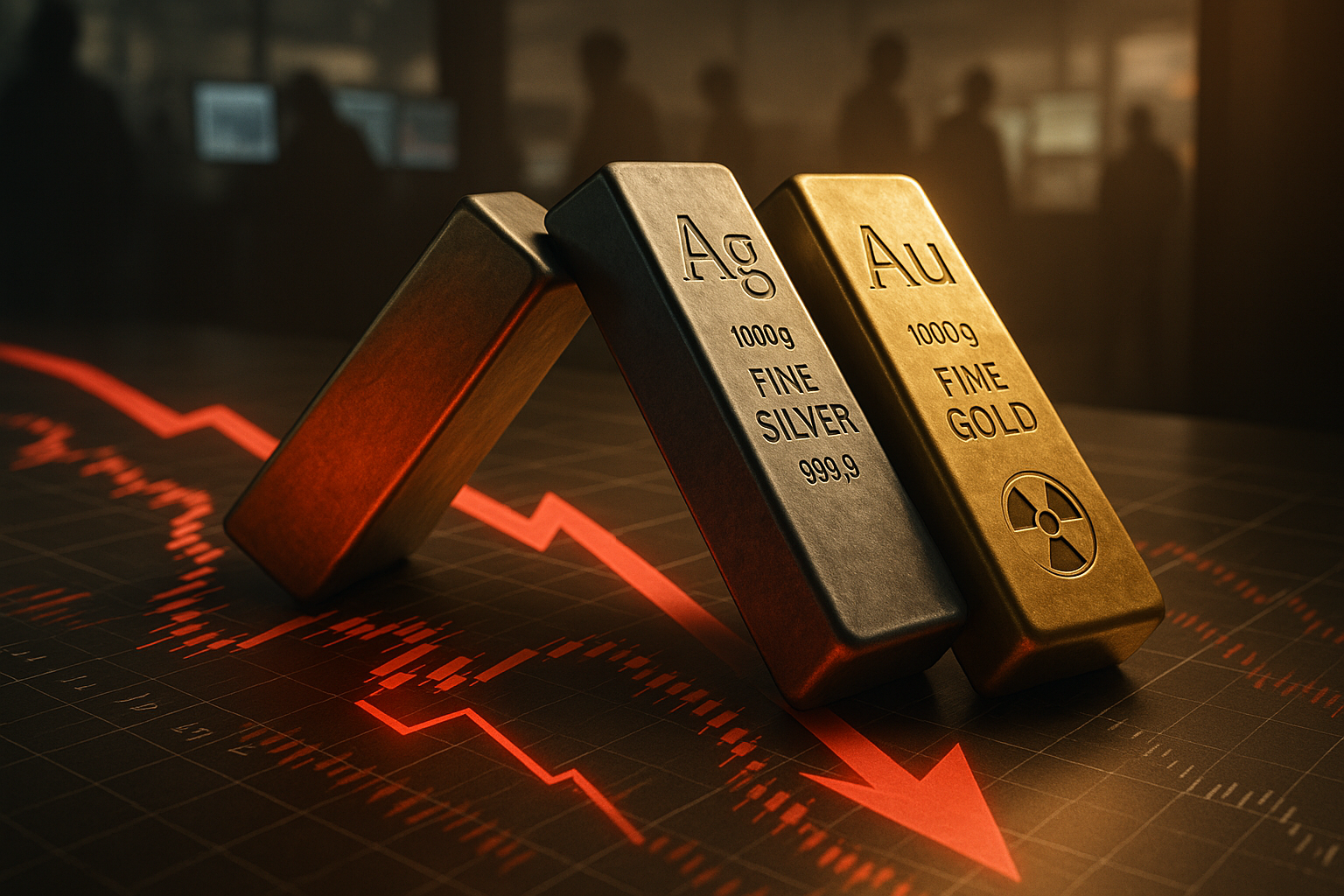It's not every day you see a market swan dive that's so perfectly synchronized you'd swear the participants rehearsed it beforehand. But that's exactly what happened yesterday across the metals market—a coordinated plummet that left traders clutching their portfolios and analysts scrambling for explanations.
I've been watching metals trade for longer than I care to admit, and this wasn't your garden-variety correction. This was different. Gold didn't just have a rough day—it brought the entire elemental family along for the nosedive.
When Metals Start Holding Hands
The truly fascinating thing? The precision of it all. Look, gold and silver moving in tandem isn't exactly breaking news—these two have been dance partners since trading pits had actual sawdust on the floor. But uranium joining this metallic mosh pit? Now that's something to raise an eyebrow over.
As one trader I spoke with pointed out (while presumably watching his stop-losses trigger in real-time), uranium suddenly started mirroring the precious metals crew since August 1st. That's odd. Really odd.
Uranium typically marches to the beat of its own radioactive drum, influenced more by nuclear power forecasts than whatever's bothering gold bugs. Yet there it was, tumbling down the same hill as if they'd all tripped over the same rock.
Beyond the Usual Suspects
Sure, we could blame the usual macro villains—dollar strength, real yields climbing, or some Fed official clearing their throat in a slightly hawkish way. But those factors don't typically rope in every metal with equal force.
(Having covered commodity sell-offs since the post-2008 boom and bust, I've learned to look beyond the obvious culprits.)
What's likely happening here is something more structural—and potentially more concerning for market stability.
The Not-So-Great Pooling
The modern financial landscape isn't what it was even a decade ago. These days, enormous pools of liquidity slosh around markets with tsunami-like force. And when these waves recede, they don't discriminate between a lump of gold and a pound of uranium.
Multi-asset managers, ETFs, algorithmic traders—these heavyweights increasingly treat commodities as one big risk bucket. When metals had their impressive run-up, positioning got crowded. And crowded trades eventually face the same problem: too many people trying to exit through the same door when the fire alarm sounds.
This creates what one veteran metals trader once colorfully described to me as "the great bathroom line problem"—when everyone needs to go at once, nobody has a good time.
Dominoes on the Periodic Table
The positioning angle deserves particular attention. CFTC data had shown increasingly bulky long positions across multiple metals. When unwinding begins—especially among leveraged players—it creates a cascade effect that defies fundamental logic.
Traders don't just sell what they should sell based on fundamentals; they sell what they can sell to meet margin calls.
It's almost poetic in its destruction—each metal falling not because of its own specific supply-demand imbalance, but because its neighbor in someone's portfolio needed liquidation. It's like watching dominoes fall, except each domino is a different element on the periodic table.
The Algorithmic Accelerant
"Hoping for a bounce tomorrow before rest of my stops trigger," our market participant noted with what I imagine was the resigned tone of someone watching their profit evaporate in real-time.
This sentiment, multiplied across thousands of trading screens, becomes a self-fulfilling prophecy. When prices hit key technical levels, automated stop-losses kick in, creating a selling stampede that would make an actual stampede look orderly by comparison.
Twenty years ago, this process might have taken days or weeks to unfold. Now? Minutes or hours. The metals barely have time for a dignified goodbye before they're all thrown into the correction cell together.
What Comes Next?
If there's any silver lining to this metallurgic massacre (pun absolutely intended), it's that correlation-driven selloffs typically overshoot fundamentals.
The metals with the strongest underlying supply-demand stories—and uranium has quite a compelling one, with nuclear power making something of a global comeback—often bounce first when the indiscriminate selling exhausts itself.
But timing that bounce? That's the tricky part. You need to spot when the forced sellers have emptied their inventory. Watch for divergence—when metals start charting their own paths again instead of moving in lockstep, it's usually a sign that fundamentals are wrestling back control from liquidity factors.
The New Normal?
This curious case of synchronized diving reminds us that modern markets increasingly behave like teenagers—prone to dramatic overreactions and excessive peer influence during stressful situations.
It's not that individual metal fundamentals don't matter anymore—they do. It's just that sometimes, those fundamentals need to wait their turn while liquidity has its moment in the spotlight.
So if you're waiting for that bounce before your stops trigger... well, good luck. Metals may all be riding the same elevator down right now, but history suggests they'll likely take different staircases—at different speeds—on the way back up.
And that, perhaps, is where the real trading opportunity lies—for those with strong enough nerves to start telling these metals apart again while everyone else is still treating them like identical twins.
